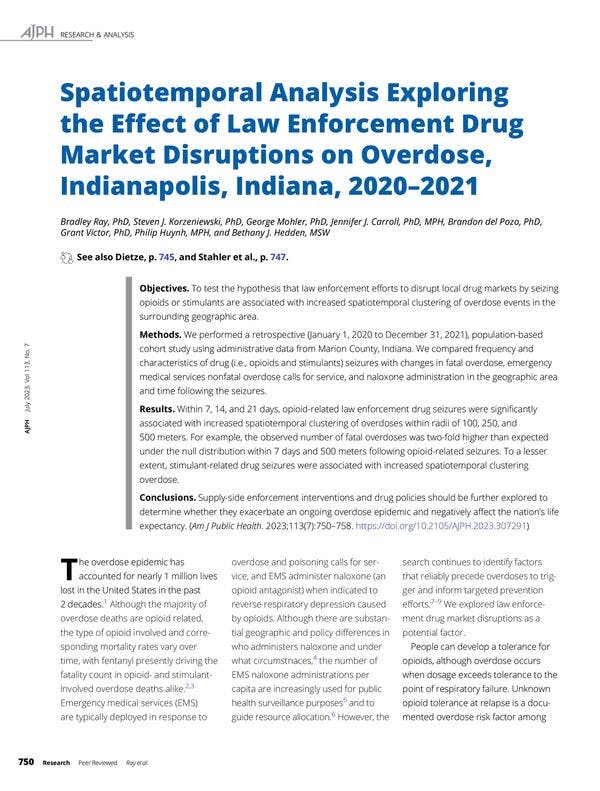Spatiotemporal analysis exploring the effect of law enforcement drug market disruptions on overdose, Indianapolis, Indiana, 2020–2021
Abstract
Objectives. To test the hypothesis that law enforcement efforts to disrupt local drug markets by seizing opioids or stimulants are associated with increased spatiotemporal clustering of overdose events in the surrounding geographic area.
Methods. We performed a retrospective (January 1, 2020 to December 31, 2021), population-based cohort study using administrative data from Marion County, Indiana. We compared frequency and characteristics of drug (i.e., opioids and stimulants) seizures with changes in fatal overdose, emergency medical services nonfatal overdose calls for service, and naloxone administration in the geographic area and time following the seizures.
Results. Within 7, 14, and 21 days, opioid-related law enforcement drug seizures were significantly associated with increased spatiotemporal clustering of overdoses within radii of 100, 250, and 500 meters. For example, the observed number of fatal overdoses was two-fold higher than expected under the null distribution within 7 days and 500 meters following opioid-related seizures. To a lesser extent, stimulant-related drug seizures were associated with increased spatiotemporal clustering overdose.
Conclusions. Supply-side enforcement interventions and drug policies should be further explored to determine whether they exacerbate an ongoing overdose epidemic and negatively affect the nation’s life expectancy.
Downloads
Regions
Related Profiles
- American Journal of Public Health (AJPH)
